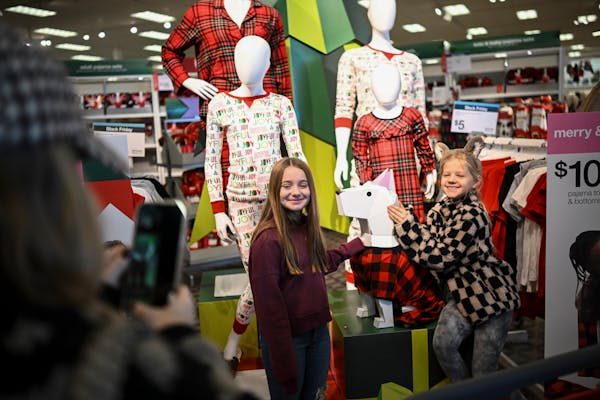Target's stock had its best day in more than four years, leading the S&P 500 index, after reporting better-than-expected profits for the fall months and a holiday plan that takes into account consumers' tightened spending.
Still, Target saw sales dip for the second quarter in a row and forecast that sales would dip about the same during its crucial holiday season.
"Consumers are still spending, but pressures like higher interest rates, increased credit card debt and reduced savings rates have left them with less discretionary income, forcing them to make trade-offs," said Target CEO Brian Cornell, in a call with media outlets.
Target customers this fall bought fewer items and spent less on everything from apparel to groceries. They also were slower to pull the trigger on purchases, for example, waiting until it was colder to buy sweatshirts or jeans instead of an earlier buying spree in August or September, Cornell said.
Despite the revenue issues, Target posted a 36% increase in net profits for the third quarter. In the fall months last year, its profit fell more than 50%.
Profits significantly exceeded Wall Street estimates, leading Target's stock price to surge nearly 18% in Wednesday trading, its biggest one-day jump since August 2019.
"I think Target is doing the right things," said Michael Lasser, a Twin Cities-based retail analyst for UBS. "It is just going to take time for its business to normalize."
Comparable sales dropped 4.9% for the quarter, in line with estimates. However, officials said back-to-school and Halloween sales outperformed the overall business in what could be a positive indicator for the Christmas holidays.
"While not great ... it was not worse than expected," said Joe Feldman, a senior research analyst for the Telsey Advisory Group. "If anything, it was a little bit better than what the Street was thinking."
Target is still fighting an uphill battle for the rest of the year, though. National retail sales dipped last month, and data throughout the year has showed shoppers shifting from higher-priced alternatives to stores such as Walmart.
To fight the trends, Target aggressively priced its holiday merchandise, with two-thirds of its holiday toys under $25 and a majority of decorations priced below $20.
"I think the big difference for us this year in this fourth quarter is the amount of newness that we've invested in," said Christina Hennington, Target's chief growth officer, during a call with analysts Wednesday. "If there's one thing that we've seen is in an environment where people are making choices and they might have some constraints with their budget, the motivation to buy is really, 'Is this going to add value to my life? Is this something that is intriguing and feels relevant or is fashion forward or is really for me?' And doing more of the same just isn't going to get it done."
In September, Target debuted its newest private label kitchenware brand Figmint. In beauty, which remains a popular category for Target, the retailer introduced in October a collection of top selling makeup in new mini sizes from Rihanna's Fenty Beauty line some of which is only available in its Target Ulta Beauty sections. Other popular products have been Stanley tumblers and Target's recent jewelry collaboration with Kendra Scott.
Target leaders attributed the company's profitability improvements in the third quarter to how the company was able to reduce its inventory, which last year had been a drag on its bottom line. By the end of the most recent quarter, Target was able to cut its inventory by 14% over last year, with a 19% reduction coming from its discretionary category, which is made up of merchandise like apparel, home decor and electronics.
Some of Target's operating costs are also normalizing with freight costs, digital fulfillment costs and other supply chain costs decreasing. After years of high costs and unusual macro trends, Target's operating margins are on the path to be what they were historically before the pandemic, Lasser said.
During the past nine months, Target has increased its net earnings by nearly 45%. Net income for the quarter was $971 million, or $2.10 a diluted share.
Target's overall quarterly revenue was $25.4 billion, which means the retailer is on track to generate about $107 billion in sales again this fiscal year. That's more than 35% higher than in 2019 before the pandemic, Lasser said.
Even with better management, Target leaders said the retailer has continued to see "inventory shrink" increase year over year. The issue is mostly related to theft but also includes other factors like processing errors.
But it should not be the "quarter-over-quarter headwind" in the fourth quarter that it has been the rest of the year, said Michael Fiddelke, chief financial officer for Target, in a call with analysts Wednesday.
If Target can hold the line and inflation can continue to get more manageable, signs point to a better retail environment for Target and other merchandisers in another six months, analysts said.
"As consumers see wages grow and they don't have to spend as much on food and household supplies, they are going to have more money to spend on discretionary items, which is the heart of what Target sells," Lasser said.
United Auto Workers reaches deal with Daimler Truck, averting potential strike in North Carolina

